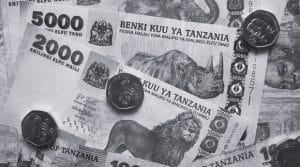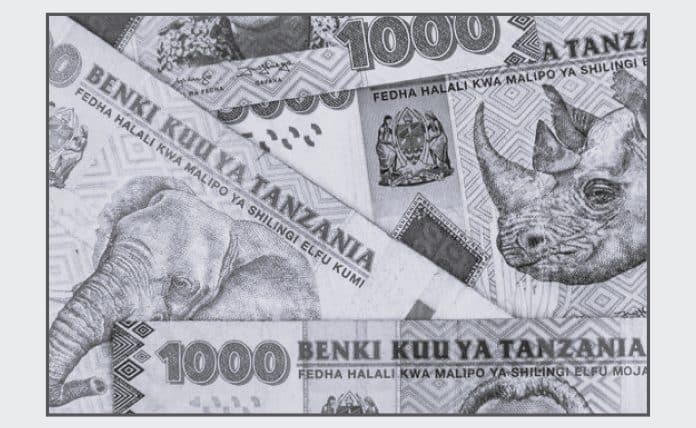Exploring the Tanzanian Shilling: An In-depth Look at East Africa’s Currency
Step into the vibrant and diverse world of East Africa as we delve into the Tanzanian shilling, the currency that powers the region’s economic engine. In this comprehensive article, we’ll take you on an in-depth journey to explore the history, significance, and unique features of the East Africa Tanzania currency.
History and Evolution of the Tanzanian Shilling
The East Africa Tanzania currency holds a rich heritage, with a lineage dating back to the German East African rupie, introduced in the late 19th century. This colonial currency was used until Tanzania gained independence in 1961, when the country introduced its own currency, the East African shilling. However, in 1966, Tanzania decided to discontinue the East African shilling and establish its own independent currency, the Tanzanian shilling.
The Tanzanian shilling has since gone through several changes, reflecting the nation’s journey from independence to becoming one of Africa’s fastest-growing economies. In 1985, the currency experienced a major overhaul, with new banknotes and coins introduced to combat counterfeiting and improve security features. Over the years, the Tanzanian shilling has become an integral part of the nation’s identity, representing its economic growth and stability.
Features and denominations of the Tanzanian Shilling

The East Africa Tanzania currency has a unique design that showcases the country’s rich cultural heritage and natural beauty. The current series of banknotes features iconic Tanzanian landmarks, such as Mount Kilimanjaro, the Serengeti National Park, and the Zanzibar Archipelago. These vibrant banknotes come in denominations of 500, 1000, 2000, 5000, and 10,000 shillings, each with distinct colors and motifs that reflect Tanzania’s diverse landscapes and cultural heritage.
In addition to banknotes, the Tanzanian shilling is also available in coins. The coins come in denominations of 50, 100, 200, and 500 shillings. These coins are commonly used for smaller transactions, while banknotes are used for larger purchases. The coins have unique designs that depict Tanzanian wildlife, such as elephants and giraffes, further highlighting the country’s natural beauty.
Exchange rates and foreign currency policies
The exchange rate of the Tanzanian shilling plays a crucial role in the country’s economy and international trade. The Bank of Tanzania, the central bank of the country, manages the exchange rate to ensure stability and promote economic growth. The exchange rate of the Tanzanian shilling is determined by various factors, including supply and demand in the foreign exchange market, inflation rates, and economic indicators.
Tanzania operates a floating exchange rate regime, which means that the value of the shilling is determined by market forces and fluctuates in response to changes in the global economy. This allows the currency to adjust to external shocks and maintain competitiveness in the international market. However, the central bank also intervenes in the foreign exchange market when necessary to stabilize the exchange rate and prevent excessive volatility.
Factors influencing the value of the Tanzanian Shilling

Several factors influence the value of the East Africa Tanzania currency, both domestically and internationally. Inflation is one of the key factors that affect the currency’s value. High inflation erodes the purchasing power of the shilling, making it less valuable. Therefore, the government and the central bank employ monetary policies to control inflation and ensure price stability.
Another factor that influences the value of the Tanzanian shilling is the country’s trade balance. If Tanzania exports more goods and services than it imports, there is a higher demand for the shilling, leading to an appreciation in its value. On the other hand, if the country imports more than it exports, there is a higher demand for foreign currencies, leading to a depreciation of the shilling.
External factors, such as global economic conditions and investor sentiment, also play a role in determining the value of the Tanzanian shilling. Changes in international commodity prices, foreign investment flows, and geopolitical events can all impact the currency’s value. Therefore, it is essential for the government and the central bank to monitor these factors and implement appropriate policies to maintain a stable exchange rate.
Impact of the Tanzanian Shilling on the economy
The Tanzanian shilling plays a vital role in the country’s economy, driving both domestic and international trade. As the official currency, it facilitates transactions in various sectors, including agriculture, manufacturing, tourism, and services. The stability of the shilling is crucial for businesses and consumers, as it ensures price transparency and reduces transaction costs.
A strong and stable currency also attracts foreign investment, as it provides confidence to investors and reduces currency risk. Foreign direct investment inflows contribute to economic growth, job creation, and technology transfer, benefiting the Tanzanian economy as a whole. Additionally, a stable currency promotes export competitiveness, as it allows Tanzanian goods and services to be priced competitively in the global market.
Furthermore, the Tanzanian shilling plays a significant role in poverty alleviation and financial inclusion. It provides a means of exchange for the majority of the population, who rely on cash transactions for their daily needs. The availability of affordable and accessible financial services, such as savings accounts and mobile money platforms, has further enhanced the role of the shilling in promoting financial inclusion and economic empowerment.
Use and acceptance of the Tanzanian Shilling in daily transactions
The East Africa Tanzania currency is widely accepted and used for daily transactions throughout the country. Cash is still the primary mode of payment for most transactions, especially in rural areas where electronic payment infrastructure is limited. Banknotes and coins are readily available in various denominations, making it convenient for people to carry out everyday transactions.
In recent years, digital payment solutions have gained popularity, especially in urban areas. Mobile money platforms, such as M-Pesa and Tigo Pesa, have revolutionized the financial landscape, allowing people to send and receive money, pay bills, and make purchases using their mobile phones. These platforms have further increased the acceptance of the Tanzanian shilling and promoted financial inclusion.
Furthermore, the Tanzanian shilling is accepted in major tourist areas, hotels, and international airports. However, it is advisable for travelers to carry some US dollars or Euros for emergencies or when visiting remote areas where the acceptance of the shilling may be limited. It is also important to note that the exchange rate for foreign currencies may vary, so it is advisable to exchange money at authorized exchange bureaus or banks.
Challenges and concerns surrounding the Tanzanian Shilling

Despite its stability and widespread use, the Tanzanian shilling faces several challenges and concerns. One of the main challenges is the threat of counterfeiting. The government and the central bank have implemented various security features on banknotes and coins to prevent counterfeiting, but counterfeit currency still circulates in the market. This poses a risk to businesses and consumers, as counterfeit money can lead to financial losses and undermine confidence in the currency.
Another concern is the impact of inflation on the purchasing power of the Tanzanian shilling. Inflationary pressures can erode the value of the currency, making it more expensive for consumers to purchase goods and services. The government and the central bank have implemented measures to control inflation, but sustained efforts are needed to maintain price stability and protect the purchasing power of the shilling.
Additionally, the Tanzanian shilling is vulnerable to external shocks, such as changes in global commodity prices or fluctuations in exchange rates. These shocks can affect the country’s trade balance, inflation, and economic growth, leading to volatility in the value of the shilling. The government and the central bank need to monitor these external factors closely and implement appropriate policies to mitigate their impact on the currency.
Comparison with other East African currencies
The Tanzanian shilling is part of the East African Community (EAC), a regional intergovernmental organization consisting of six countries: Tanzania, Kenya, Uganda, Rwanda, Burundi, and South Sudan. Each country in the EAC has its own currency, but there is a common goal to promote regional integration and facilitate cross-border trade.
Compared to other East African currencies, the Tanzanian shilling has remained relatively stable in recent years. It has maintained a competitive exchange rate and low inflation, which has contributed to its attractiveness for foreign investors. However, the exchange rates between the different East African currencies fluctuate, reflecting the economic conditions and policies of each country.
The EAC has made efforts to harmonize the currencies and promote regional trade. For example, there are plans to introduce a common currency, the East African shilling, which would further facilitate trade and economic integration. However, the timeline for the introduction of the common currency is still uncertain, and there are challenges to be overcome, such as aligning monetary policies and achieving economic convergence among member countries.
The Future of the Tanzanian Shilling
The East Africa Tanzania currency has come a long way since its inception, reflecting the country’s journey from colonization to becoming one of Africa’s fastest-growing economies. With its unique design, stability, and widespread use, the currency plays a vital role in the daily lives of Tanzanians and the country’s economic development.
Looking ahead, the Tanzanian shilling faces both opportunities and challenges. The government and the central bank need to continue implementing policies to maintain price stability, promote economic growth, and protect the currency from counterfeiting. Efforts to enhance financial inclusion and digital payment infrastructure will further strengthen the role of the shilling in the economy.
As Tanzania continues to attract foreign investment and promote regional integration within the East African Community, the Tanzanian shilling will play an increasingly important role in facilitating trade and economic cooperation. By understanding the history, significance, and unique features of the Tanzanian shilling, individuals and businesses can navigate the currency with confidence and contribute to the growth and prosperity of East Africa’s vibrant economy.
For more articles related to Financial Services in Tanzania, click here!

































